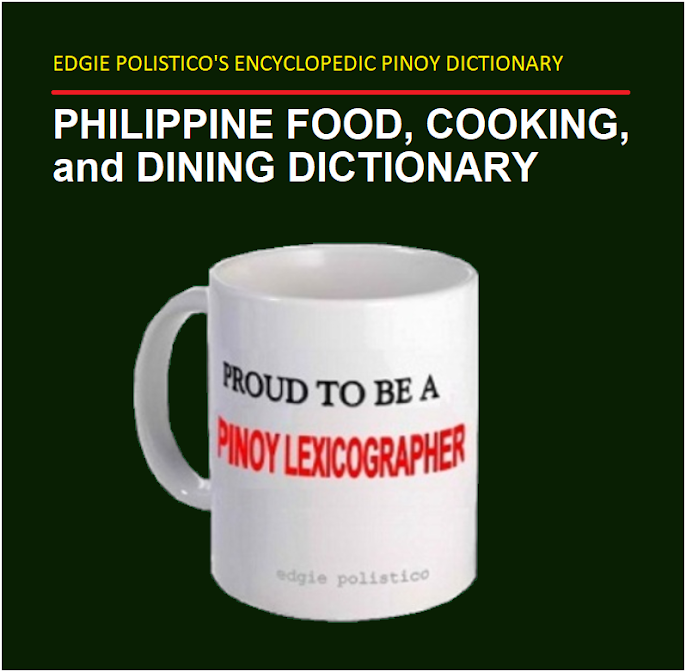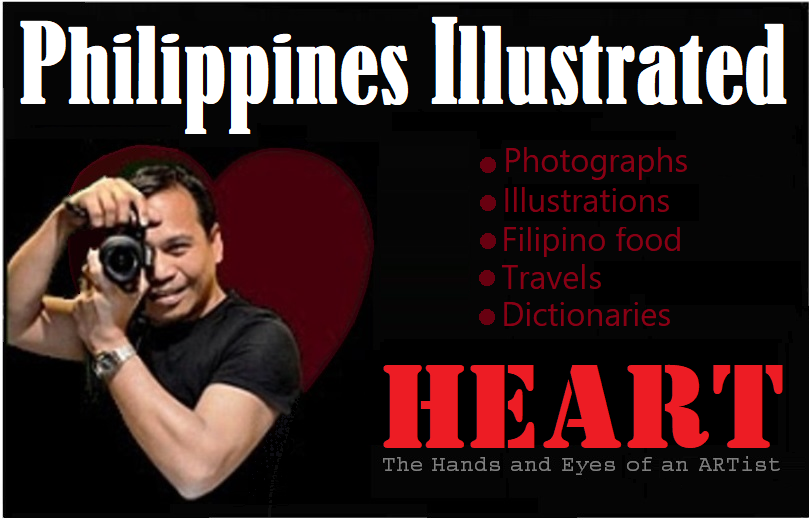Usage: "The family celebrated with a boodle fight, feasting on grilled seafood and rice spread across banana leaves."
Other name:
a.k.a. boodle feast anywhere in the Philippines.
- Ambagan – contribution, of any food and in any form.
- Samahan – camaraderie or fellowship.
- Sabayang pagsisikap – collective struggle.
Based on
The Journal of American Folk-Lore - Volume 4 (1891), there was this New England
word kitcaboodle that derived from the phrase Kit and caboodle
that was later on shortened to kit ‘n’ caboodle. The kit refers to
persons and caboodle to their belongings.
 |
| Journal of American Folk-Lore, Volume Part 1-2, (1891) |
Then in
1994, Paul Dickson wrote in his book, War Slang, A Collection of
American Fighting Words and Phrases Since the Civil War, attributing boodle fight
to have derived from American boodle, which is a party foodstuff consisting of
cake, candy, ice cream, pastries, etc.. Dickson defined Boodle Fight as a party at which boodle
is served. He also identified a boodle bag and defined it as a kit or Army
haversack into which one stuffs boodle.
 |
| War Slang, A Collection of American Fighting Words and Phrases Since the Civil War (1994) |
Fast forward to the post-World War II era in the Philippines.
After having completed their military training or service, Filipino soldiers
would gather whatever provisions remained in their bags and lay them out
together, either on a long table or directly on the ground lined with a spread of
whole banana leaves. This communal meal became their way of holding a despedida,
or farewell gathering. They called it a boodle fight.
 |
| Boodle fight of Scout Ranger Course Class 193 of 2015 (Photo courtesy of Scout Ranger Training School, Camp Tecson, San Miguel, Bulacan) |
The dining was informal and practical. Soldiers would eat with their clean hands, quickly and efficiently, just as they had been trained to act in a snappy manner with discipline and urgency. It wasn’t about ceremony or luxury; it was about shared experience, camaraderie, and honoring the bond formed through service.
 |
| Boodle fight of actual Philippine soldiers in Sulu (Photo shared by Proud Bisaya on Facebook) |
Now, boodle fight can be for anybody. It's no longer exclusive to the military. Even the politicians use it during the election campaign as their guise of pakikisama sa masa to gain popularity and collect more votes.
Over time, the traditional boodle fight evolved into what is now known as a boodle feast. While the original practice emphasized shared struggle and camaraderie, the modern version often centers on the food itself - as a reward or token of celebration for an achievement or milestone.
Today, a boodle feast can serve many purposes: it can be a way to bond with friends and family, a gesture of appreciation, or a special treat for someone meaningful. Though its roots lie in military tradition, its spirit of togetherness continues to thrive in Filipino culture, now with a more festive and abundant flair.
A graduation feast to remember: Our family boodle feast experience.
In 2012, we marked a major milestone in our family - my son's college graduation. After the ceremony, there was no question about how we would celebrate. We headed straight to Seafood Island at the Mall of Asia (MOA) in Pasay City for a dinner that was as festive as the occasion itself.
%20strip.png) |
| A treat to remember at Seafood Island in MOA, Pasay City. We had this Tali Beach themed Boodle Feast to celebrate my son's college graduation in 2012. |
The feast itself was a visual and culinary delight. Laid out on banana leaves, the Tali Beach theme came alive with a generous array of skewered grilled fish, squid, and eggplant, alongside steamed shrimps, mussels, crab, pork BBQ, lots of rice, and a refreshing touch of fresh lato (seagrapes) and seasonal fresh fruits. Every bite was a celebration, not just of food, but of achievement, togetherness, and love.
That evening wasn’t just about dinner. It was about honoring hard work, sharing joy, and creating a memory that still brings a smile years later. If you’re ever looking for a way to celebrate something big with the people who matter most, a boodle feast might just be the perfect way to do it.
- The Journal of American Folk-Lore, Volume 4, 1891.
- Dickson,Paul; War Slang A Collection of American Fighting Words and Phrases Since the Civil War, 1994.
For more about Filipino food, use our Philippine Food, Cooking, and Dining Dictionary. It is OPEN and FREE.
.JPG)






